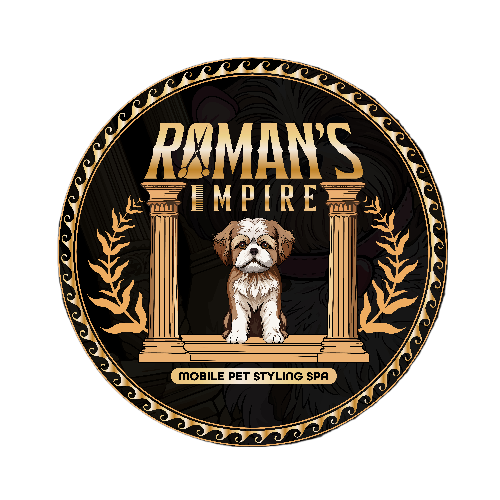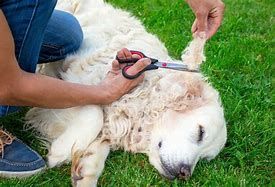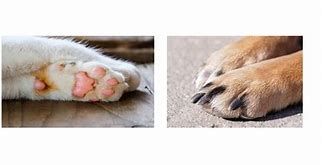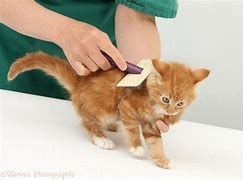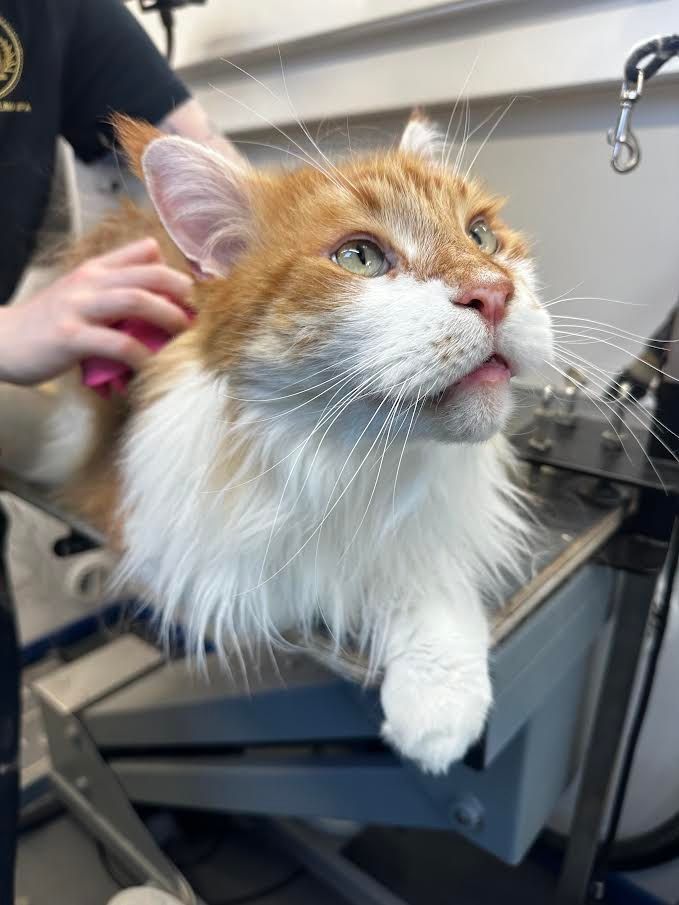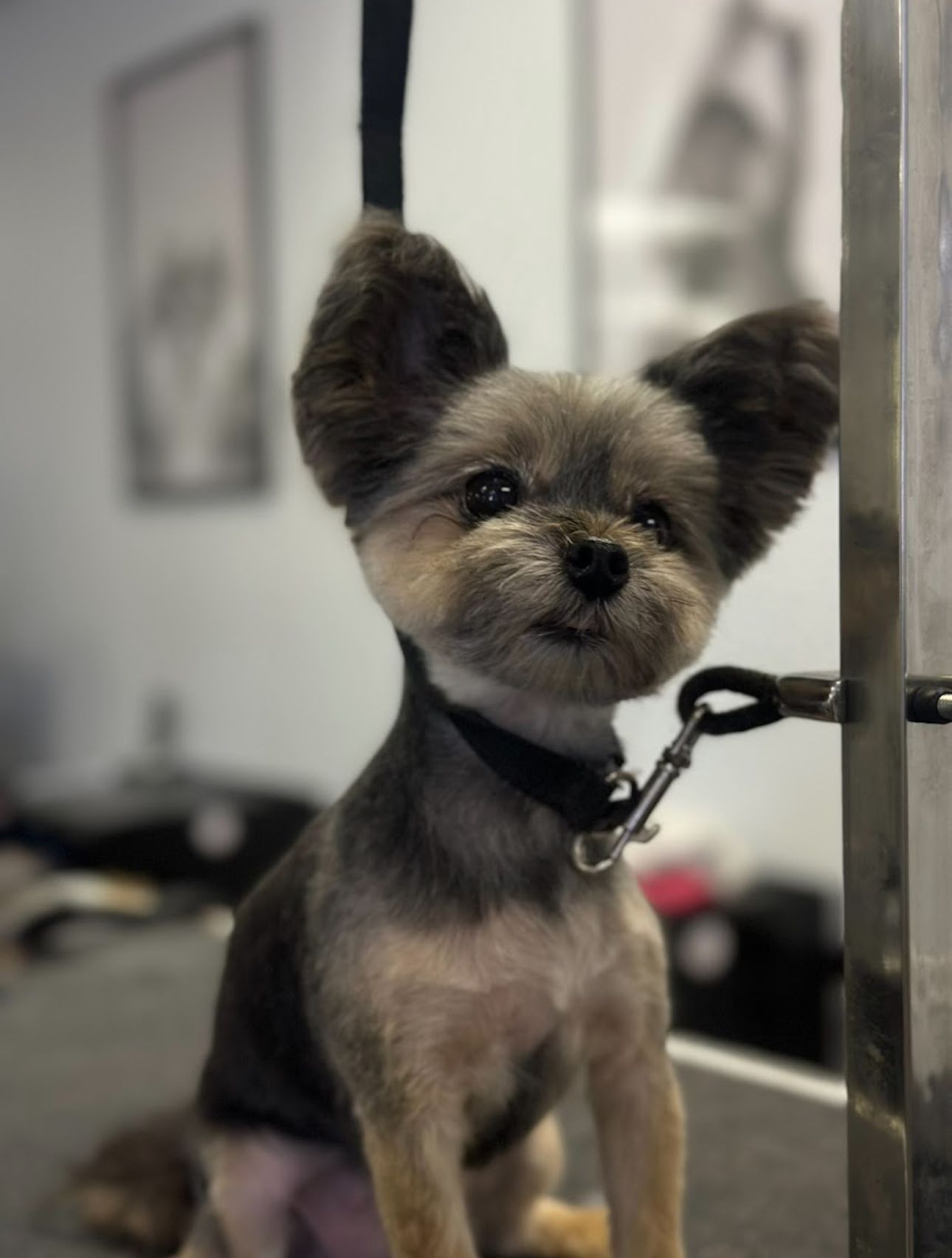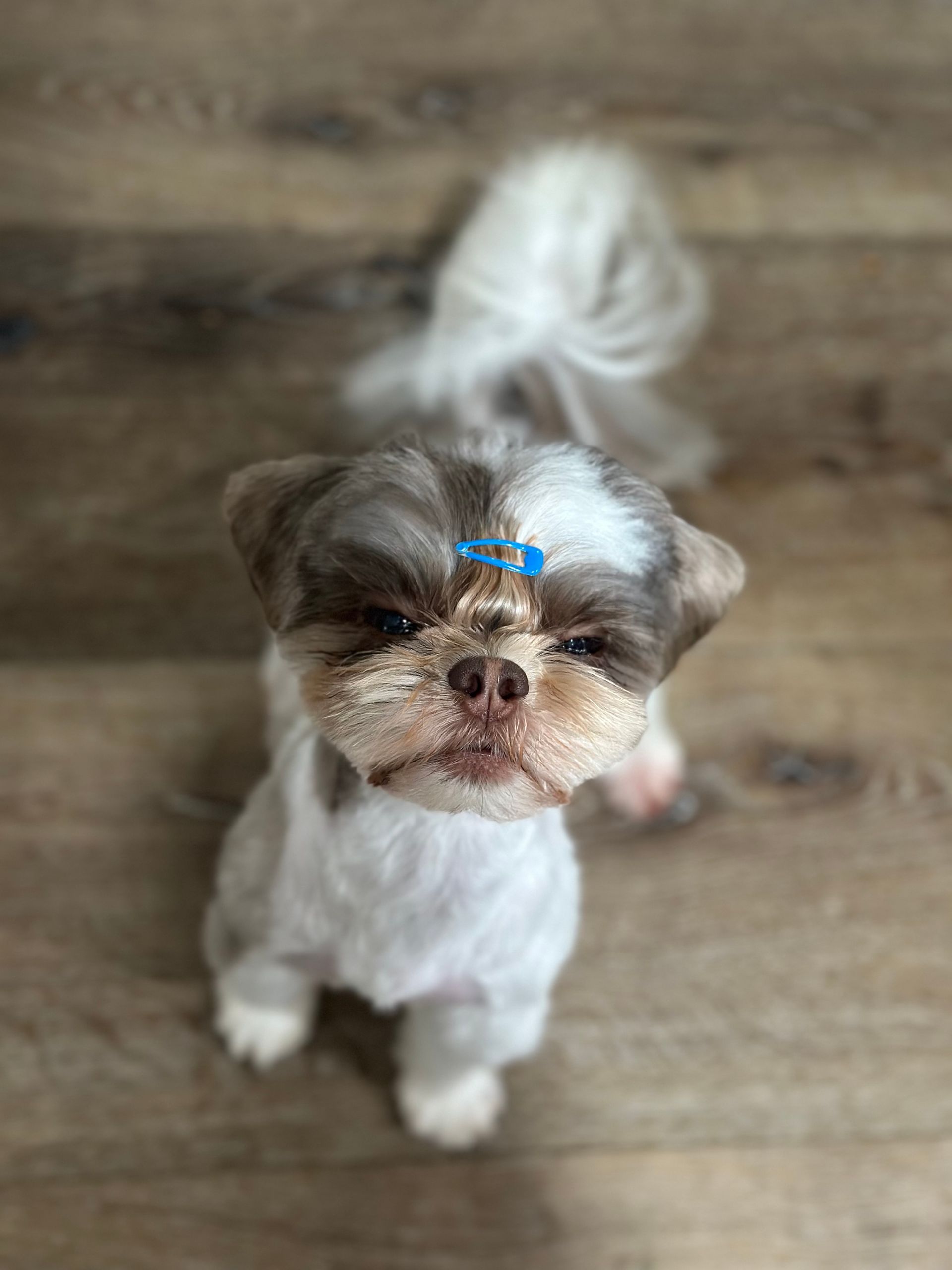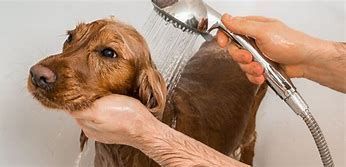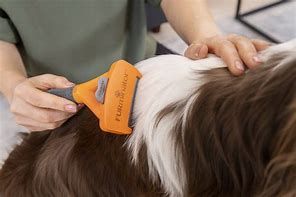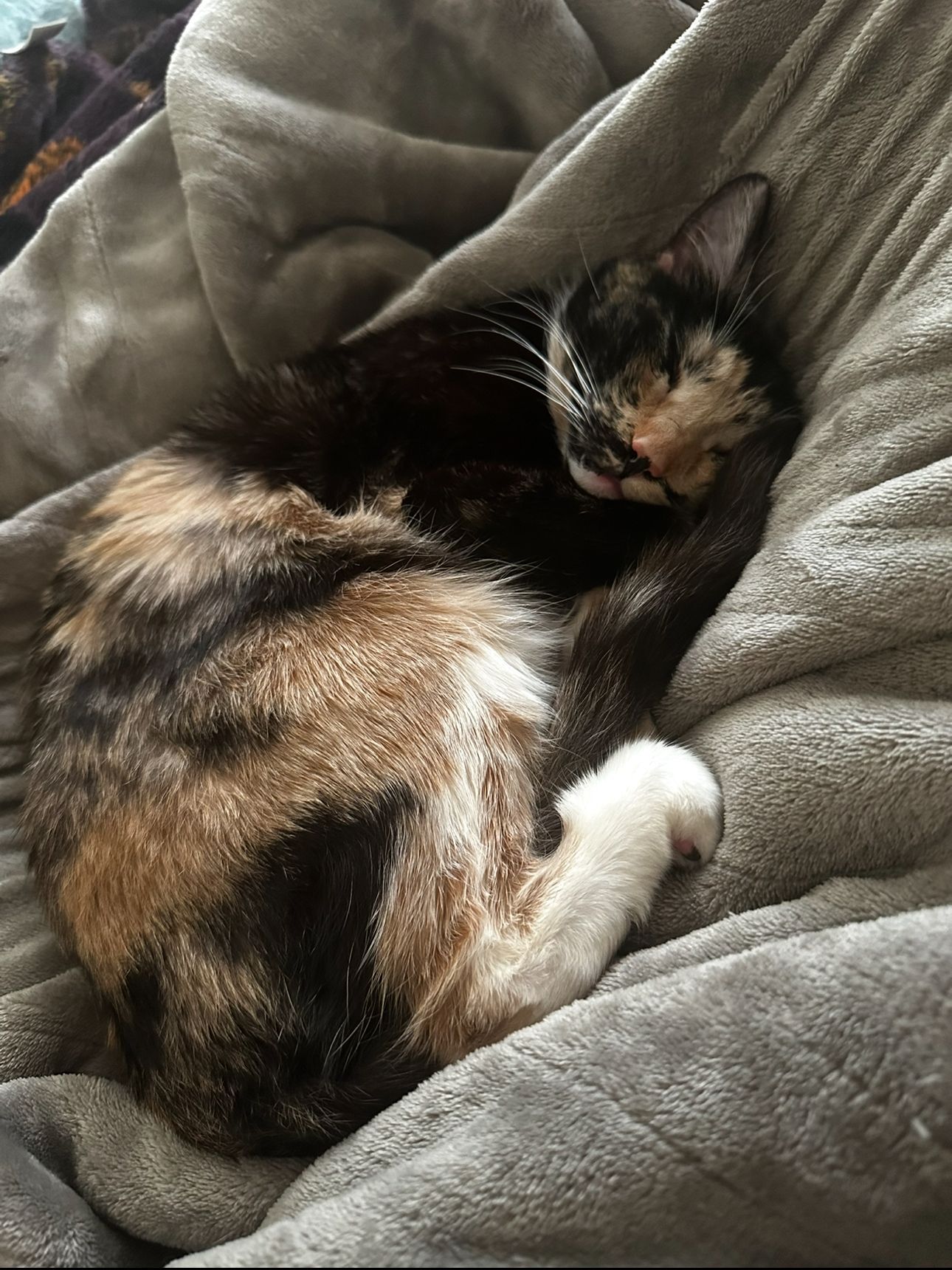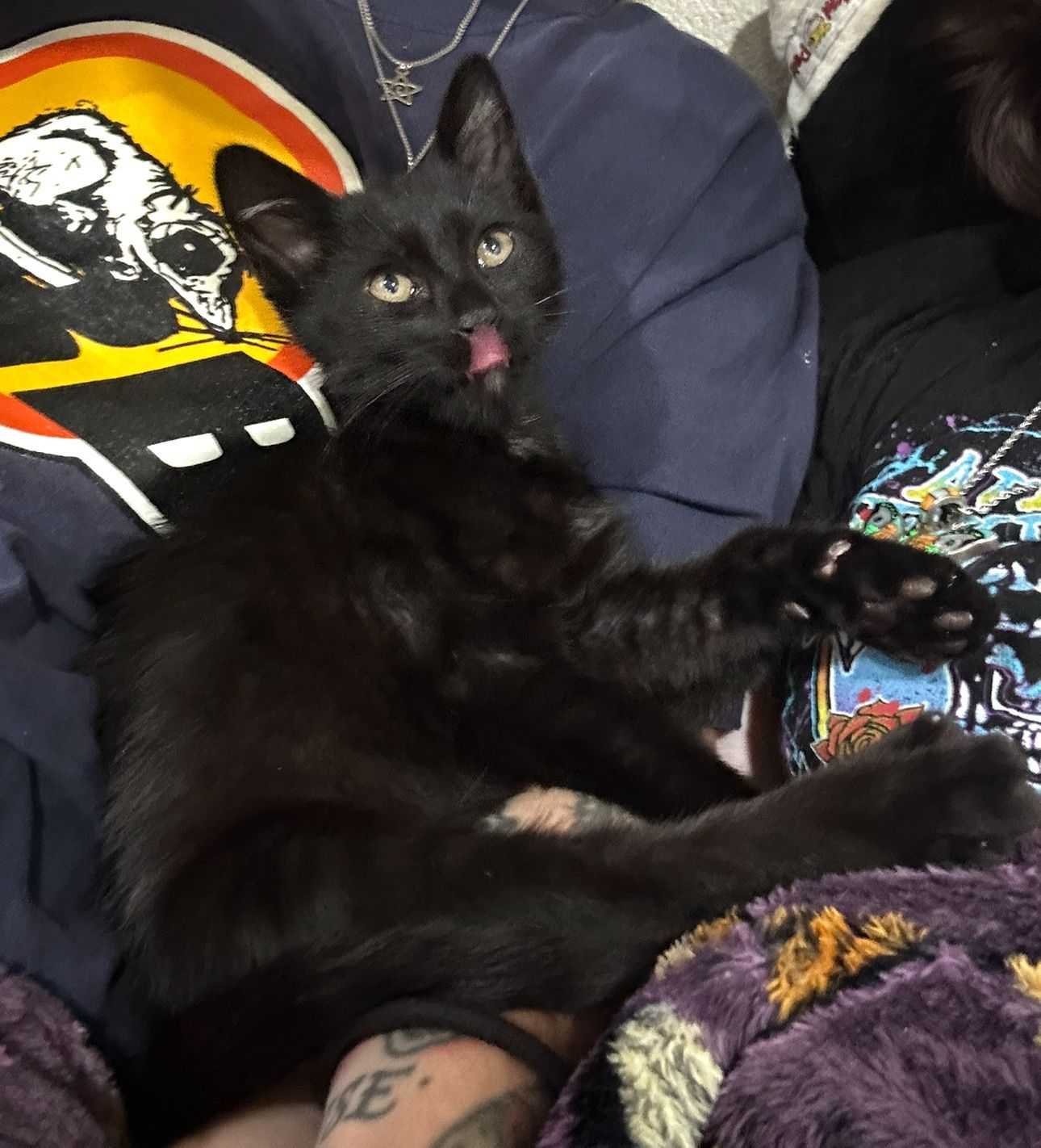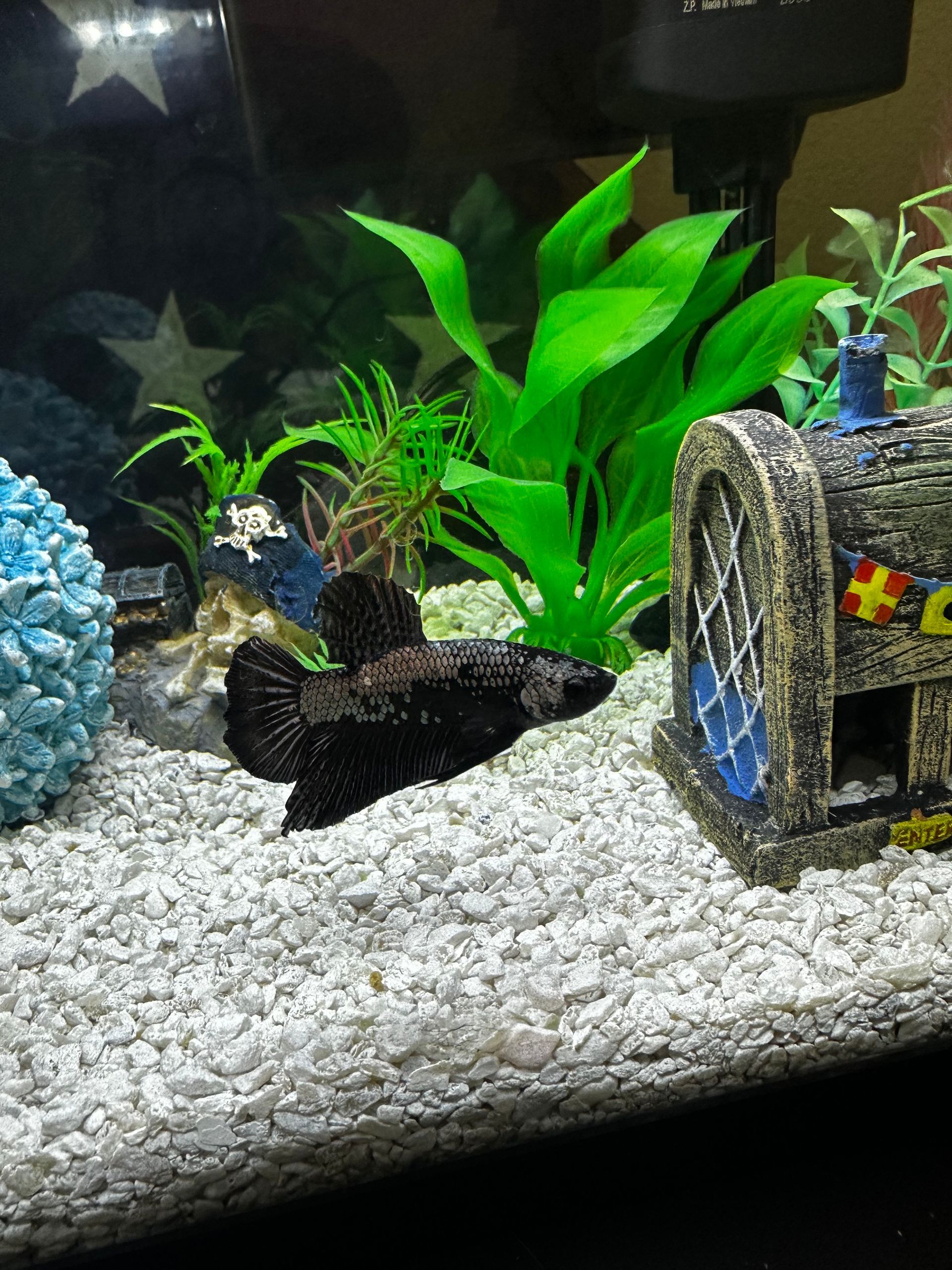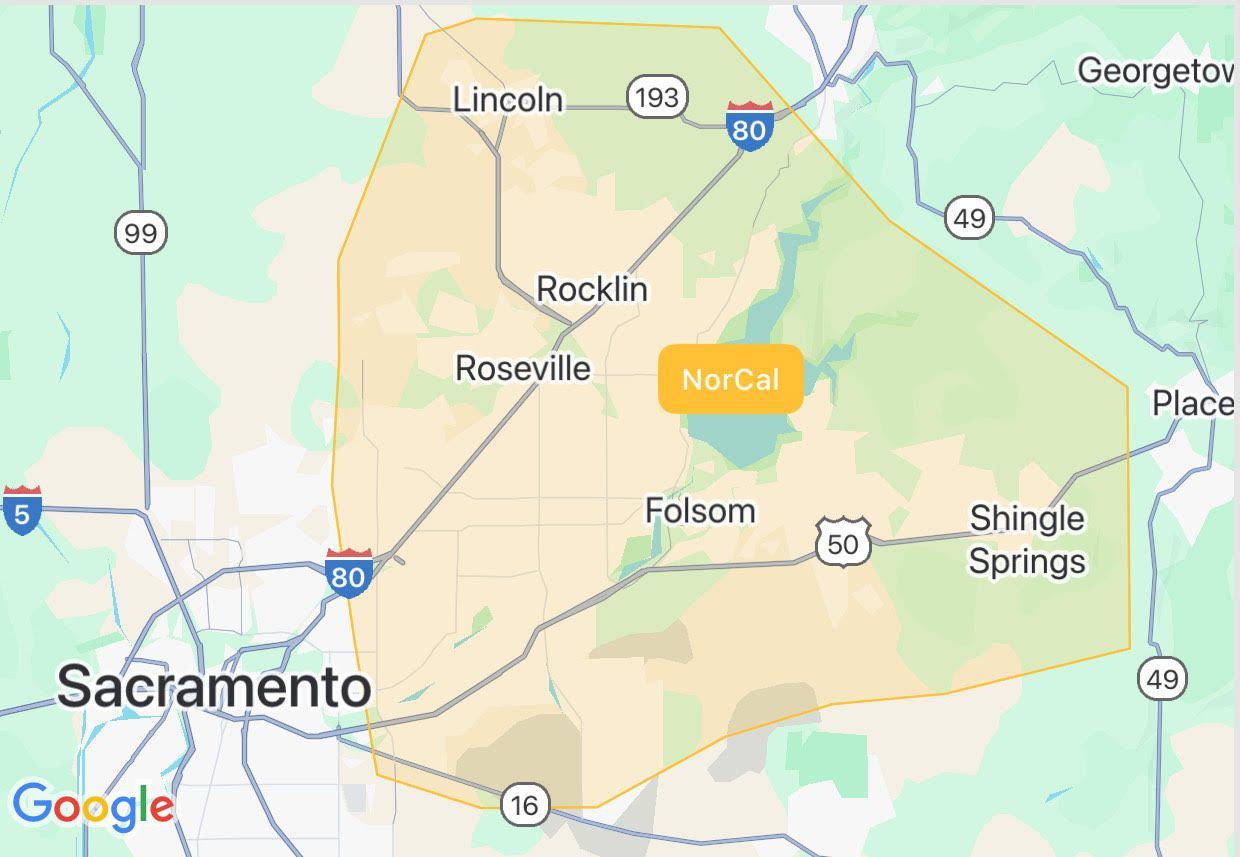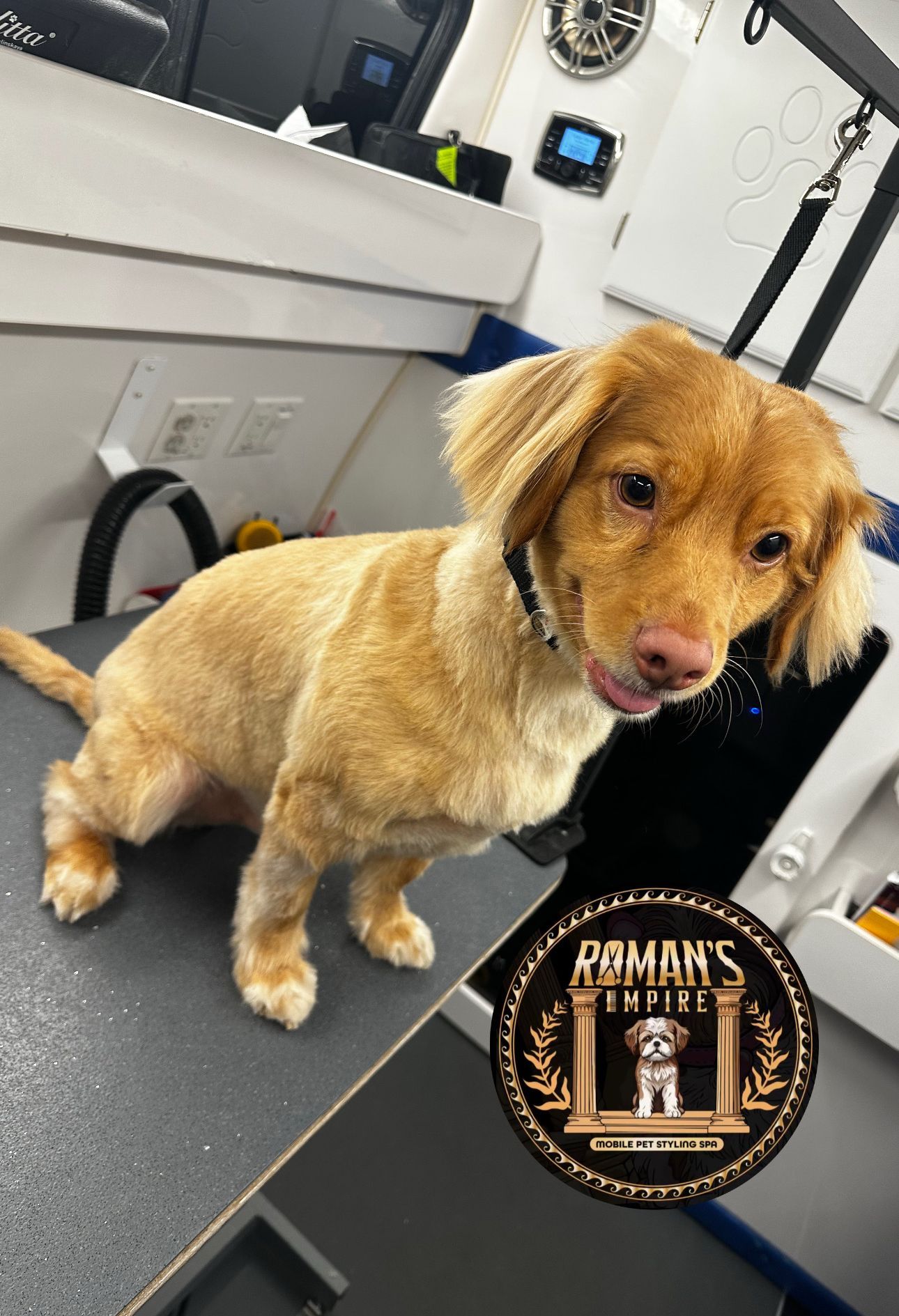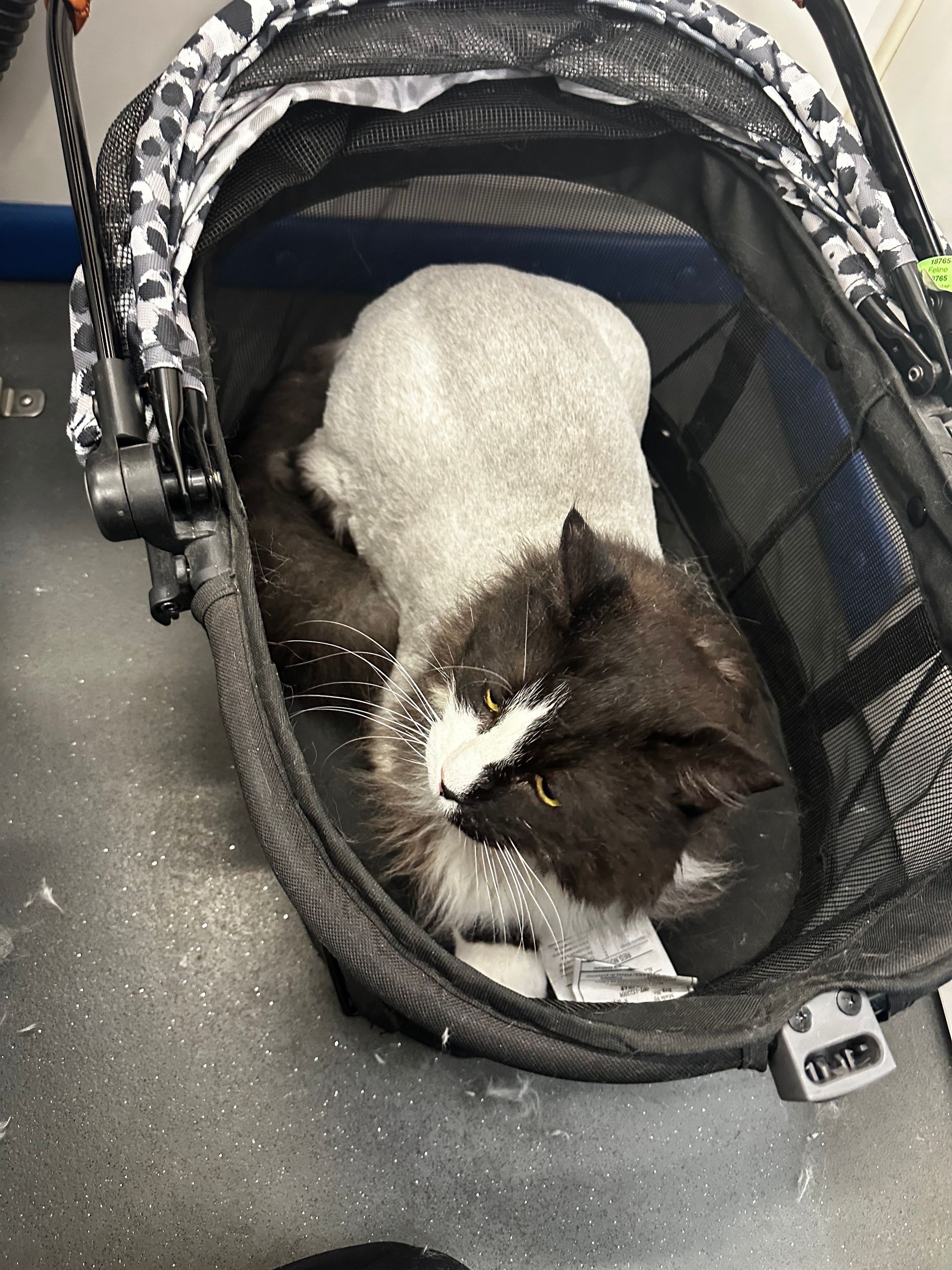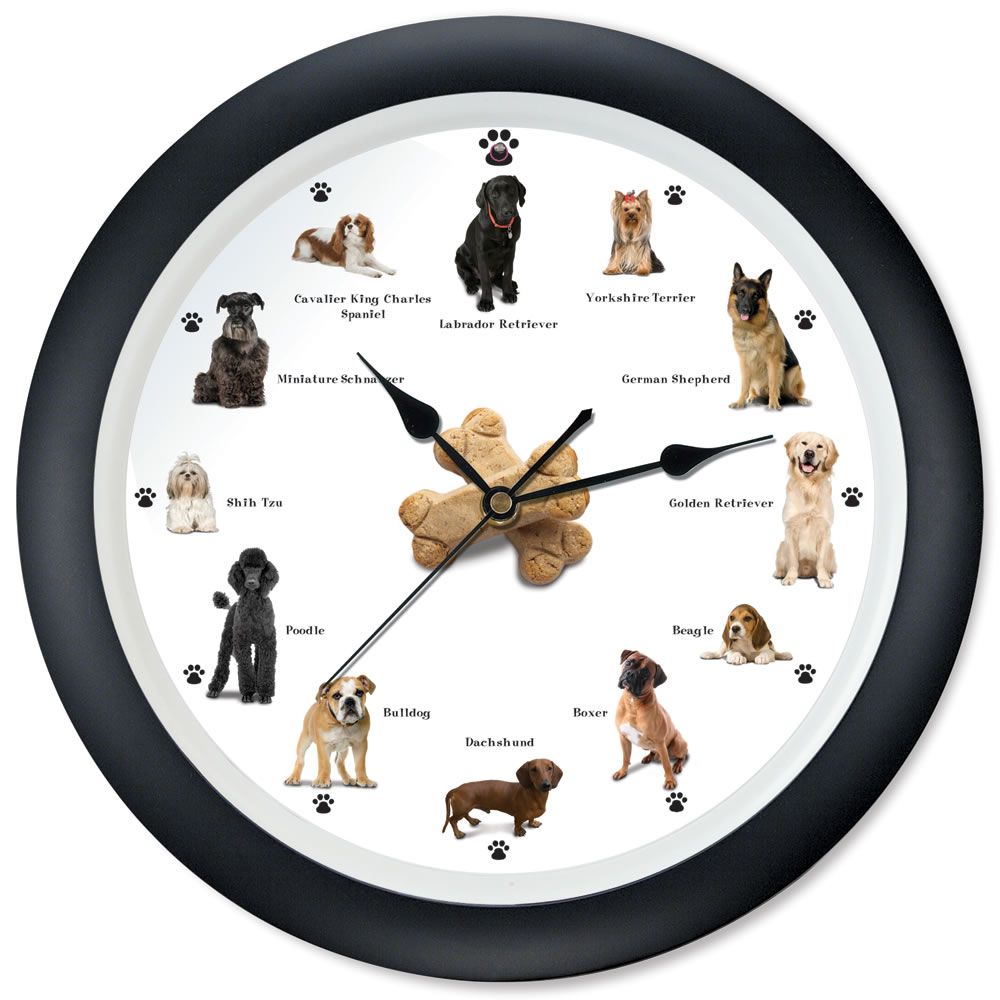Trust Takes Time: Why Sticking With One Groomer Is Crucial
“He Was Fine With the Last Girl…”
When a dog struggles with a new groomer, it’s easy to assume something went wrong. You might say or feel: “He was fine with the last girl—but now he’s scared, reactive, or won’t cooperate.” But there are two very common and very different explanations, and neither mean your dog is broken—or that the new groomer did something wrong.
1. A Strong Bond Was Formed—And the Change Feels Like Too Much
Dogs are deeply relational. If your dog had a groomer they saw regularly, especially from a young age, they may have built a powerful trust bond. That familiarity, tone of voice, rhythm, handling style, even the scent of the van or salon—all of it added up to a sense of safety.
Now, with a new groomer in a new environment, your dog may be dealing with:
- A totally different handling style
- A new scent profile and grooming space
- Loss of routine and predictability
- Emotional confusion or worry about being separated from a trusted person
All of that can be overwhelming, especially for sensitive dogs or puppies in their early socialization windows. So while it may seem like a sudden regression, it’s often just an emotional response to change.
2. The Dog Wasn’t “Fine”—They Were Just Frozen
The other possibility is harder to see, but just as common. Dogs in unfamiliar or stressful situations sometimes don’t fight or flee—they freeze. They may appear calm, still, or “easy,” but they’re actually shutting down out of fear.
This can happen especially with puppies or dogs at their first few appointments. When they don't know what's coming or don’t feel safe enough to protest, they endure quietly. But as they gain confidence—or reach their limit—their true feelings emerge.
This may look like:
- Sudden fear, flinching, or avoidance
- Growling, snapping, or defensive behavior
- Refusal to be handled in ways they previously “tolerated”
This doesn’t mean the new groomer did something wrong. It often means the dog is no longer suppressing their discomfort—and is finally expressing it.
Both scenarios reveal how crucial consistency and relationship-building are in grooming. Dogs thrive on predictability, familiarity, and trust—and when that foundation is strong, grooming becomes not just manageable, but meaningful and cooperative.
Building Trust Isn’t Optional—It’s Foundational
Many pet parents rotate groomers based on price, location, or availability—without realizing that this revolving door approach can negatively affect their dog’s experience, behavior, and even safety.
Grooming isn’t just about a haircut. It’s about handling, body language, stress regulation, and relationship-building. And just like with your vet, daycare, or trainer, having a consistent groomer is essential for long-term success. See the real cost of cheap grooming.
Let’s break down why sticking with one groomer can make all the difference.
Dogs Don’t Always Show Their True Selves Right Away
Some dogs freeze or appear compliant during early appointments—not because they’re fine with grooming, but because they’re overwhelmed or unsure. As they grow more comfortable, they begin to express discomfort more honestly.
That might look like:
- Growling or snapping when touched in sensitive areas
- Pulling away or trying to escape
- Refusing to stand or stay still
- Flinching or hypervigilance
This isn’t a “bad dog” suddenly misbehaving—it’s a dog finally feeling safe enough to say how they really feel. This is not a signal the groomer did something wrong.
Why Some Dogs “Wait” to Show Discomfort or Aggression
Just like kids, many dogs suppress how they feel until they’ve formed some trust. A dog might silently tolerate something painful or frightening for the first few visits, only to begin resisting or reacting once they believe it’s safe to speak up.
This is exactly why a long-term relationship with one groomer is so important. We notice these shifts. We adjust. And we work with the dog’s real responses—not a masked version of them.
New Groomer, New Stress
On the flip side, some dogs act out more with a new groomer—not because they’re aggressive by nature, but because they’re completely overwhelmed.
Why Dogs May Act Out More With a New Groomer
Imagine walking into a totally foreign space with a new person touching you, using strange tools on your body, and expecting you to comply with no context or familiarity.
Here’s just a taste of what a dog has to process with a new groomer:
- A new voice and tone
- Unfamiliar scent and touch
- Different equipment, table height, and handling techniques
- Changes in pace, pressure, or rhythm
- A different emotional energy
- No known safety anchors
It’s too much. And when dogs are overwhelmed, they’re less able to mask discomfort, tolerate pain, or regulate fear. That’s why a dog who seemed “fine” elsewhere may suddenly panic, bite, or shut down with a new professional. For more insight, discover what professional grooming actually involves.
It’s not about disobedience—it’s about emotional overload. See why shaking and hesitance isn't a sign of abuse.
For Some Dogs, Consistency Isn’t Just Helpful—It’s Essential
While all dogs benefit from a familiar groomer and predictable environment, for certain dogs, it can make or break their entire grooming experience.
This is especially true for:
- Anxious dogs who already struggle to process new environments, touch, or separation
- Reactive pets who are hyper-aware of their surroundings and often operate in a constant state of alert
- Dogs with underlying medical conditions, such as arthritis, neurological issues, or skin sensitivities, where stress or mishandling can worsen symptoms
- Dogs introduced to professional grooming too late, who missed the critical early socialization window and never learned how to safely accept grooming
For these dogs, changing groomers—or even just introducing grooming too late—can lead to:
- Emotional shutdown or panic
- Defensive aggression
- Exacerbation of physical symptoms (limping, trembling, skin flare-ups)
- Deep-rooted distrust of all future grooming attempts
They don’t need more exposure—they need the right kind of exposure: patient, skilled, and consistent. The goal isn’t to just “get through the groom,” but to help the dog feel safe enough to engage, tolerate, and eventually cooperate.
This is where cooperative care comes in. It’s a philosophy built on communication, trust, and consent.
But it only works when there’s stability—when the same person shows up, reads the dog’s signals, adapts the process, and builds the relationship session by session.
For sensitive dogs, grooming isn’t a task. It’s a trust fall.
Learn how grooming agitates and exacerbates preexisting conditions, how aggression and unpredictability increase risk of injury. See how grooming affects senior pets and how they must be groomed differently, as well as how a delayed introduction to professional grooming affects them
Cooperative Care Requires Trust, Not Rotation
Dogs learn cooperative grooming—like standing still, accepting tools, and tolerating difficult areas—through repetition, structure, and trust. That can’t happen when they’re passed from one groomer to another.
Consistency allows us to build:
- A rhythm the dog can anticipate
- Handling strategies that work for their temperament
- Safe associations with tools and steps
- A reliable emotional baseline
We don’t just groom—we teach the dog how to be groomed. And that’s a skill built in relationship, not rotation.
Explore our cooperative care approach for more.
Long-Term Relationships Create Long-Term Success
Sticking with one groomer may not always feel like the convenient choice—but it’s the kindest and most effective one for your dog.
We build familiarity. We earn trust. We communicate clearly. And we learn who your dog is on a deeper level—so they can be groomed safely, gently, and successfully for years to come.
Your Groomer is Your Dog’s First Line of Defense
When you build a long-term relationship with your groomer, they become more than just a stylist—they become a trusted observer of your dog’s changing body and behavior.
We notice:
- New lumps or skin changes
- Early signs of arthritis or sensitivity
- Grooming-related aggression or flinching
- Dental issues, ear infections, coat quality shifts
- Emotional or behavioral changes that signal health decline
These things are often subtle, and unless a groomer has worked with your dog consistently, they may not catch them—or they may not know what’s “normal” for your pup in the first place.
Why Consistency Matters Even More for Puppies and Rescues
For puppies, every experience is formative. During their early months, their brains are especially impressionable—absorbing, filing, and responding to each new situation as either safe or unsafe. This includes grooming.
When puppies are introduced to grooming in a calm, consistent, trust-based way, they learn that it’s just another part of life. But if they’re taken to different groomers each time—or introduced to full, overwhelming grooms too soon—they may begin to associate grooming with stress, fear, or even pain.
That’s why:
- Sticking with one groomer helps your puppy learn the steps, sounds, and sensations of grooming in a predictable, low-stress way.
- It creates a safe environment where trust is built gradually.
- The groomer can pace things according to your puppy’s development, temperament, and tolerance—rather than forcing a full groom on day one.
- The puppy has the chance to form positive associations with tools, touch, and being handled.
Without that consistency, puppies may:
- Resist or panic during future grooms
- Develop defensive behavior like growling or biting
- Struggle with anxiety or overstimulation
- Require behavioral rehab later in life just to be safely groomed
Puppies don’t just grow out of fear. They grow into what they’re taught. And that’s why sticking with one gentle, educated groomer from the start is one of the best gifts you can give your dog—for life.
Just like puppies, rescue dogs need time, patience, and consistency—sometimes even more so. These dogs often come with unknown histories, past traumas, or gaps in socialization. Even if they seem confident at home, grooming is an entirely different experience: new tools, sounds, sensations, and handling.
Whether they’ve experienced neglect, bounced between homes, or simply lived without structure, grooming can be confusing, overstimulating, or even scary.
Many rescue dogs are:
- Unfamiliar with being touched in sensitive areas
- Startled by sounds or movements common in grooming
- Struggling with trust or fear-based behaviors
- Still adjusting to their new home, routine, or human
Inconsistent grooming setups—especially bouncing between different groomers—can undo progress and reinforce anxiety. What they need most isn’t speed or perfection. It’s patience, predictability, and a safe person to guide them through the process at their pace.
For rescues, sticking with one groomer helps:
- Build a predictable routine and safe space
- Reinforce trust through familiar scent, voice, and technique
- Reduce the chance of triggering past traumas from rough handling, restraint, or neglect
- Allow the groomer to slowly learn the dog’s history, sensitivities, and communication style
Bouncing between groomers can feel like starting over every time—and for a rescue dog, that can mean constant stress, reactivity, or regression. A steady relationship gives them a foundation to finally relax, learn, and heal.
Trust Is Earned, Not Assumed--Even With Seasoned Pets
Grooming isn't just about making pets look good--it's about helping them feel safe in an experience they'll need for life. That safety is built slowly, appointment by appointment, in the hands of a groomer who understands their needs and knows their signals.
When dogs are passed between groomers or started too late in life, we disrupt the very thing they need most: stability. Whether you're raising a puppy, caring for a senior, working through reactivity, or loving a rescue dog through their healing--the groomer you choose should be the one you plan to stick with.
Serving Thousand Oaks, Camarillo, Newbury Park, Westlake Village, Agoura Hills, Calabasas, Oak Park, Moorpark, and Simi Valley.
